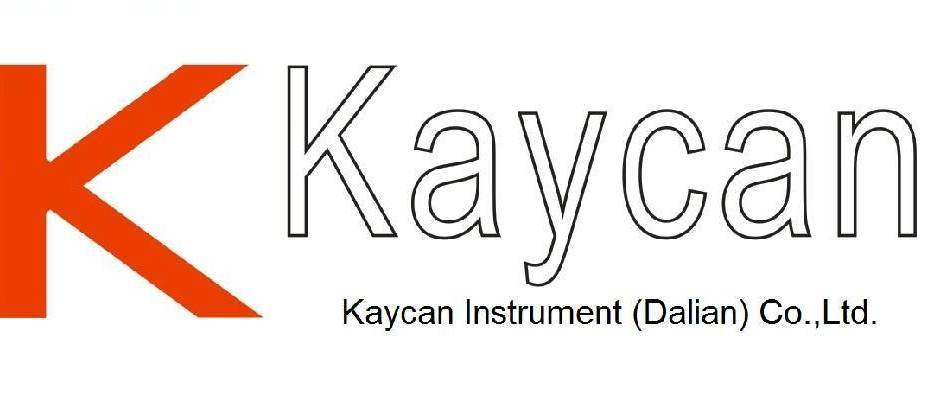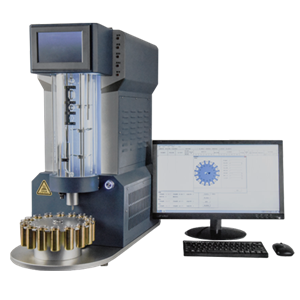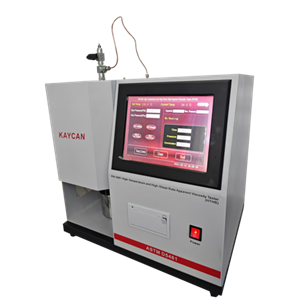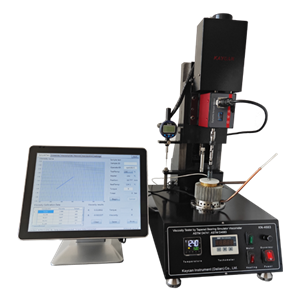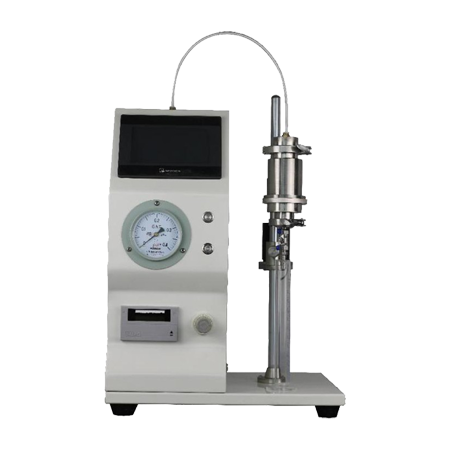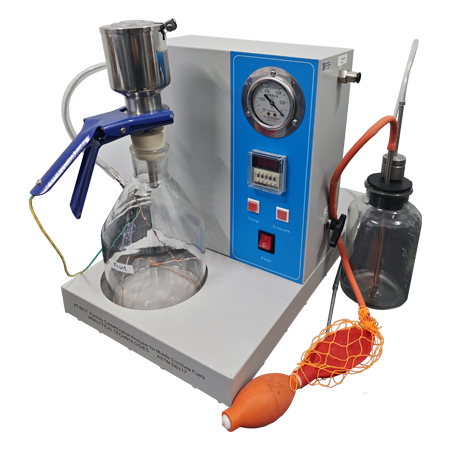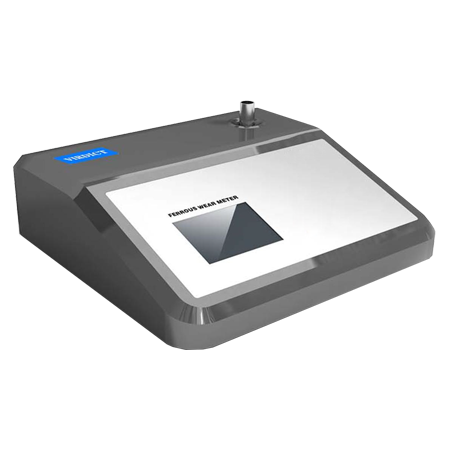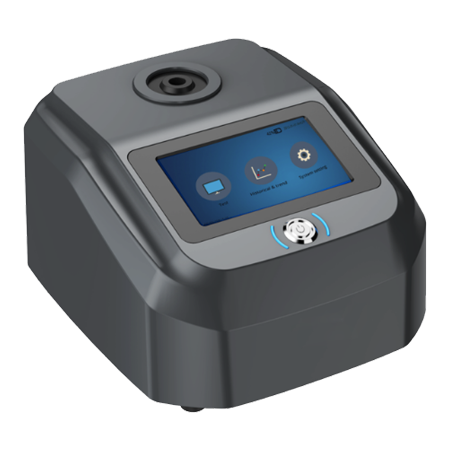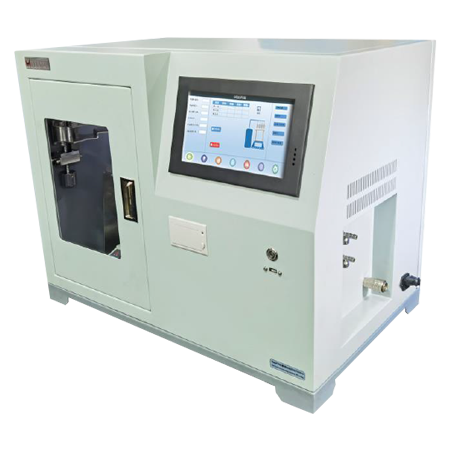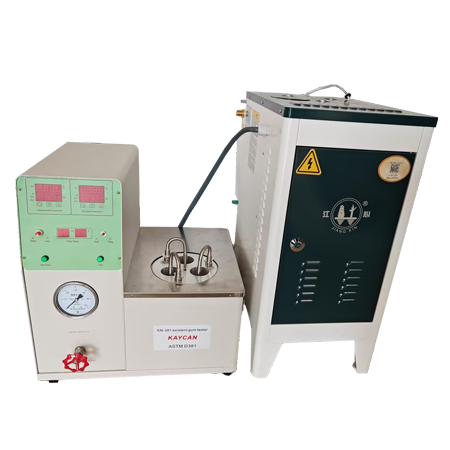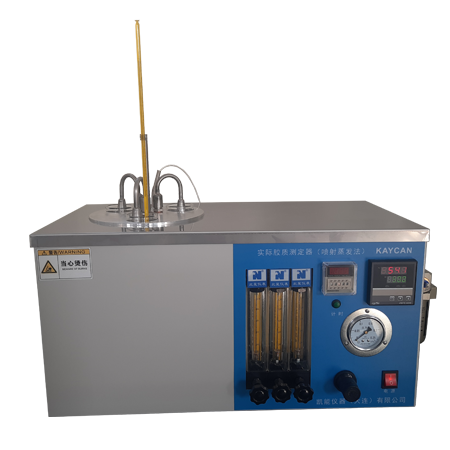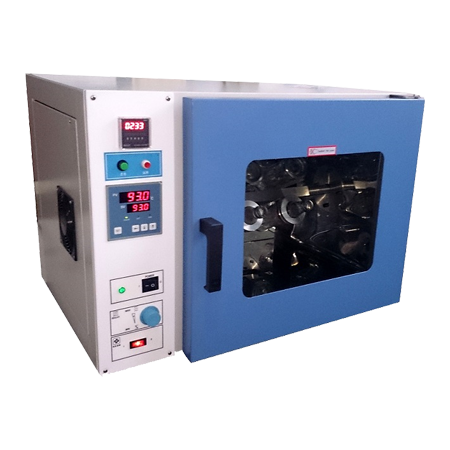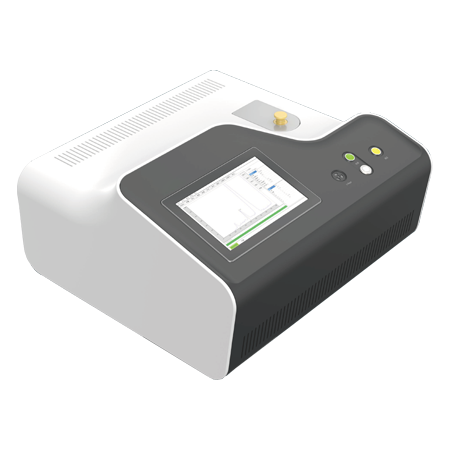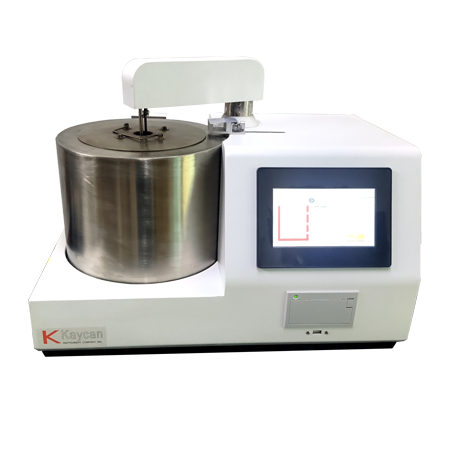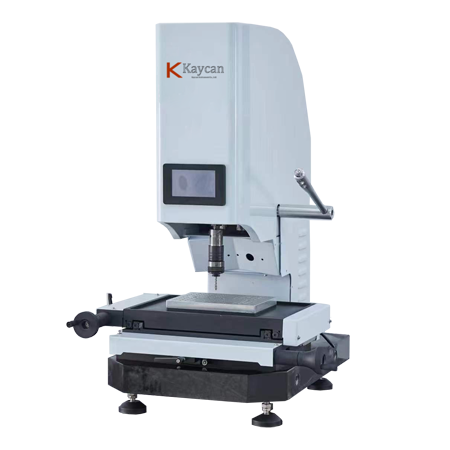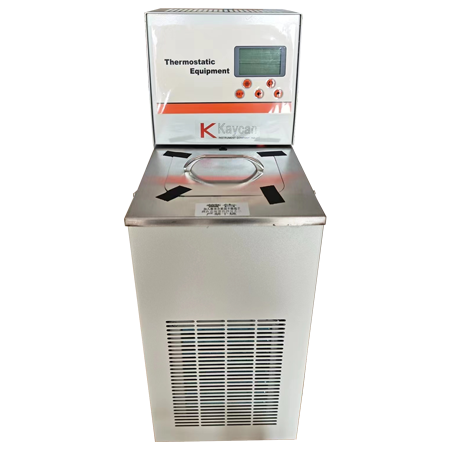-
ISO 13357 Lubricating Oil Filterability Tester
This instrument is produced in accordance with the ISO13357 Petroleum products - Determination of the filterability of lubricating oils - Part 2: Procedure for dry oils, and is used to determine the filterability of lubricating oil based on mineral oil, especially the hydraulic oil in the hydraulic system. It is not suitable for liquids based on other materials (such as flame-retardant liquids, because they may be compatible with the filter membrane used in this method); it is also not suitable for some hydraulic oils with special properties, because they contain insoluble or partially Dissolved additives or special macromolecular substances.
Send Email Details -
ASTM D6217 Apparatus for Particulate Contamination in Middle Distillate Fuels
KN-6217 Apparatus for Particulate Contamination in Middle Distillate Fuels conforms to ASTM D6217 Standard Test Method for Particulate Contamination in Middle Distillate Fuels by Laboratory Filtration. The mass of particulates present in a fuel is a significant factor, along with the size and nature of the individual particles, in the rapidity with which fuel system filters and other small orifices in fuel systems can become plugged. This test method provides a means of assessing the mass of particulates present in a fuel sample.
Send Email Details -
ASTM D8120 Ferrous Wear Meter
KN-8120 Ferrous Wear Meter conforms to ASTM D8120 Standard Test Method for Ferrous Debris Quantification. By quantifying the concentration of total ferrous debris, this test method provides a direct indication of war in the machinery by enabling the user to pinpoint when there is a deviation from the normal buildup of ferrous debris shed by the machinery or when the concentration of ferrous debris has exceeded safe operating limits.
Send Email Details -
ASTM D8120 Ferrous Debris Quantification Tester
KN-8120Z Ferrous Debris Quantification Tester conforms to ASTM D8120 Standard Test Method for Ferrous Debris Quantification. By quantifying the concentration of total ferrous debris, this test method provides a direct indication of wear in the machinery by enabling the user to pinpoint when there is a deviation from the normal buildup of ferrous debris shed by the machinery or when the concentration of ferrous debris has exceeded safe operating limits.
Send Email Details -
ASTM D6421 Apparatus for Electronic Port Fuel Injector Fouling by Bench Procedure
KN-6421 Apparatus for Electronic Port Fuel Injector Fouling by Bench Procedure conforms to ASTM D6421 Standard Test Method for Evaluating Automotive Spark-Ignition Engine Fuel for Electronic Port Fuel Injector Fouling by Bench Procedure. This test method covers a bench test procedure to evaluate the tendency of automotive spark-ignition engine fuel to foul electronic port fuel injectors (PFI). The test method utilizes a bench apparatus equipped with Bosch injectors specified for use in a 1985-1987 Chrysler 2.2-L turbocharged engine. This test method is based on a test procedure developed by the Coordinating Research Council (CRC) for prediction of the tendency of spark-ignition engine fuel to form deposits in the small metering clearances of injectors in a port fuel injection engine.
Send Email Details -
ASTM D381 Existent Gum Content Tester
KN-381 Existent Gum Content Tester (Steam Method) conforms to ASTM D381 Standard Test Method for Gum Content by Jet Evaporation. When testing either aviation or motor gasoline, a 50±0.5ml quantity of fuel is evaporated under controlled conditions of temperature and flow of air. When testing aviation turbine fuel, a 50±0.5ml quantity of fuel is evaporated under controlled conditions of temperature an flow of steam. For aviation gasoline and aviation turbine fuel, the resulting residue is weighed and reported as milligrams per 100ml. For motor gasoline, the residue is weighed before and after extracting with heptane and the results reported as milligrams per 100ml.
Send Email Details -
ASTM D381 Existent Gum Content Tester, Air Method
KN-381A Existent Gum Content Tester (Air Method) conforms to ASTM D381 Standard Test Method for Gum Content by Jet Evaporation. When testing motor gasoline, a 50±0.5ml quantity of fuel is evaporated under controlled conditions of temperature and flow of air. For motor gasoline, the residue is weighed before and after extracting with heptane and the results reported as milligrams per 100ml.
Send Email Details -
ASTM D2619 Apparatus for Hydrolytic Stability of Hydraulic Fluids
KN-2619 Apparatus for Hydrolytic Stability of Hydraulic Fluids conforms to ASTM D2619 Standard Test Method for Hydrolytic Stability of Hydraulic Fluids (Beverage Bottle Method). This test method differentiates the relative stability of hydraulic fluids in the presence of water under the conditions of the test. Hydrolytically unstable hydraulic fluids form acidic and insoluble contaminants which can cause hydraulic system malfunctions due to corrosion, valve sticking, or change in viscosity of the fluid. The degree of correlation between this test method and service performance has not been fully determined.
Send Email Details -
Apparatus for Chlorine in Aromatics
KN-7536 Apparatus for Chlorine in Aromatics conforms to ASTM D7536 Standard Test Method for Chlorine in Aromatics by Monochromatic Wavelength Dispersive X-ray Fluorescence Spectrometry. This test method provides for the precise measurement of the chlorine content of aromatics with minimal sample preparation and analyst involvement. The typical time for each analysis is five or ten minutes. Knowledge of the chlorine content of aromatics is important for process control as well as the prediction and control of operational problems such as unit corrosion and catalyst poisoning, and in the blending of products to commodity specifications. Various federal, state, and local agencies regulate the chlorine content of some petroleum products, including aromatics. Unbiased and precise determination of chlorine in aromatics is critical to compliance with regulatory standards.
Send Email Details -
ASTM E659 Autoignition Temperature Tester
KN-659 Autoignition Temperature Tester conforms to ASTM E659 Standard Test Method for Autoignition Temperature of Chemicals. A small, metered sample of the product to be tested is inserted into a uniformly heated 500ml glass flask containing air at a predetermined temperature. The contents of the flask are observe in a dark room for 10min following insertion of the sample, or until autoignition occurs. Autoignition is evidenced by the sudden appearance of a flame inside the flask and by a sharp rise in the temperature of the gas mixture. The lowest internal flask temperature at which hot-flame ignition occurs for a series of prescribed sample volumes is taken to be the hot-flame autoignition temperature of the chemical in air at atmospheric pressure. Ignition delay times (ignition time lags) are measured in order to determine the ignition delay-ignition temperature relationship.
Send Email Details -
ASTM D8288 Automatic Tapping Torque Testing System
KN-8288 Automatic Tapping Torque Testing System conforms to ASTM D8288 Standard Test Method for Comparison of Metal working Fluids Using a Tapping Torque Test Machine. This test method can be used to predict the comparative lubricating properties of a metalworking fluid (MWF). Fluids that produce lower torques or higher efficiencies are predicted to have better machining characteristics. The method is applicable to all tap types, machining speeds, alloys and coatings that can be fabricated into a test piece. Comparison between different operating conditions or various types of fluids can be made. The reportable quantity is the efficiency or mean average torque of a reference fluid divided by the mean average torque of the fluid of interest.
Send Email Details -
KN-SY Circulating Water Bath
KN-SY Circulating Water Bath can be widely used in drying, concentration, distillation, impregnated chemical reagents, impregnated drugs and biological products, and can also be used for constant temperature heating in water baths and other temperature tests, and is an essential tool for biology, genetics, viruses, aquatic products, environmental protection, medicine, health, biochemical laboratories, analysis rooms, education and scientific research.
Send Email Details
